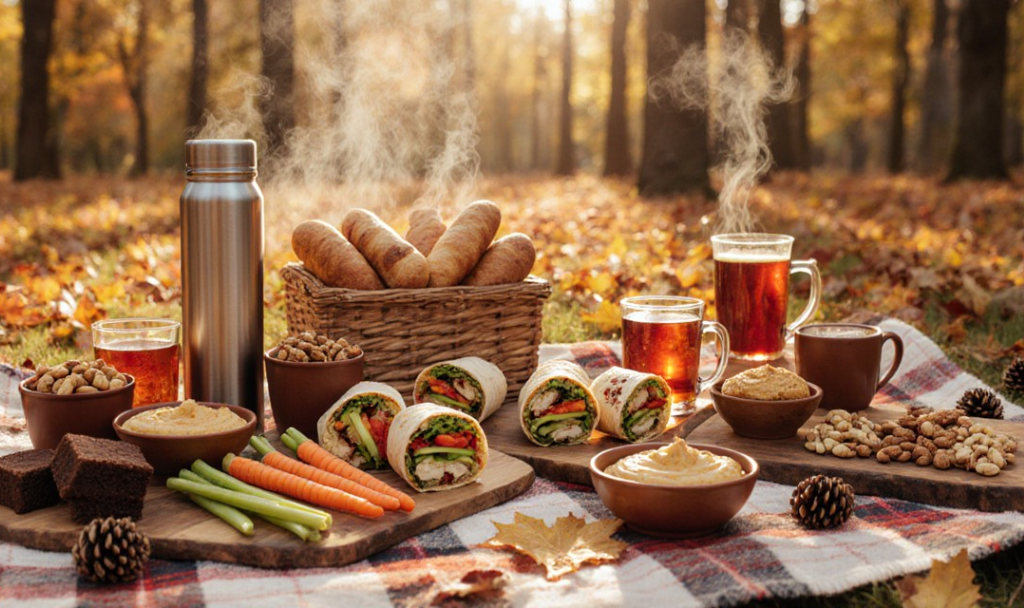
Μικροπράσινα: Υπερτροφές για Υγεία και Γεύση
Τα οφέλη και η κατανάλωση των μικρολαχανικών
Το μικροπράσινο, ή μικρολαχανικά, ή φύτρα είναι νεαροί βλαστοί χόρτων και λαχανικών που καταναλώνονται 7-10 ημέρες μετά τη βλάστηση. Δεν είναι απλώς μια νέα μαγειρική τάση ή ένας ασυνήθιστος τρόπος διακόσμησης ενός πιάτου. Η συγκέντρωση θρεπτικών συστατικών στα μικροπράσινα έως 40 φορές υπερβαίνει τους δείκτες στα ώριμα λαχανικά και χόρτα!
Ο Γιούρι Ρομάν, διευθυντής της ΖΕΛΕΝ, μας είπε πώς να καταναλώνουμε καλύτερα, πώς να αποθηκεύουμε και, το σημαντικότερο, πώς να λαμβάνουμε φύτρα.
Costless: Ποιο είναι το κύριο όφελος του μικροπράσινου και ποιο είδος φύτρων θεωρείται το πιο χρήσιμο;
Γιούρι: Το κύριο πλεονέκτημα του μικροπράσινου είναι η τεράστια συγκέντρωση βιταμινών, μετάλλων και μικροστοιχείων. Όταν ένα σπορόφυτο μόλις βγαίνει από τον σπόρο, περιέχει περισσότερα θρεπτικά συστατικά από ένα ενήλικο φυτό (καρπός). Επομένως, παίρνουμε μια τεράστια ποσότητα οφέλους σε μια μικρή μερίδα σαλάτας. Επιπλέον, είναι πολύ νόστιμο και όμορφο.
Είναι δύσκολο να ξεχωρίσουμε το πιο χρήσιμο είδος μικροπράσινου, επειδή περιέχει διαφορετικά στοιχεία. Για παράδειγμα, τα φύτρα μηδικής περιέχουν μεγάλη ποσότητα διαφόρων βιταμινών και μετάλλων, τα μπιζέλια έχουν περισσότερη βιταμίνη C από τα εσπεριδοειδή ή τα μαύρα φραγκοστάφυλα και τα φύτρα ηλίανθου έχουν πολύ σίδηρο. Επομένως, μπορούμε να επιλέξουμε ανεξάρτητα με τι θα κορεστεί ο οργανισμός μας.
C: Υπάρχει εποχικότητα στη χρήση μικροπράσινων; Και μπορούμε να πούμε ότι κάτι είναι καλύτερο να λαμβάνεται το καλοκαίρι και κάτι το χειμώνα;
Γ: Δεν υπάρχει εποχικότητα, οι βιταμίνες στα φύτρα είναι διαθέσιμες όλο το χρόνο. Το καλοκαίρι, λόγω της μεγάλης ποσότητας φρούτων και λαχανικών, το σώμα μας αποθηκεύει βιταμίνες. Και το χειμώνα, όταν εξαντλούνται τα αποθέματα θρεπτικών συστατικών, το μικροπράσινο γίνεται μια εξαιρετική και γρήγορη πηγή για την αναπλήρωσή τους.
C: Πώς είναι καλύτερο να χρησιμοποιείτε φύτρα στο φαγητό; Και μπορούμε να πούμε ότι είναι μια αντικατάσταση για τα συνηθισμένα χόρτα;
Γ: Το μικροπράσινο μπορεί να διακοσμήσει, να βελτιώσει το χρώμα, να δώσει μια ενδιαφέρουσα γεύση και ταυτόχρονα να αυξήσει την ποσότητα των θρεπτικών συστατικών σχεδόν σε κάθε καθημερινό πιάτο. Μπορεί να χρησιμοποιηθεί με ασφάλεια κατά την παρασκευή σαλατών, σούπες, ρολά λάβας, σάντουιτς, ενεργειακά κοκτέιλ, smoothies. Επίσης, το μικροπράσινο χρησιμοποιείται αρκετά συχνά για τη διακόσμηση πιάτων σε ένα εστιατόριο.
Την χειμερινή περίοδο, όταν τα λαχανικά και τα χόρτα έχουν πολύ λίγες βιταμίνες, το μικροπράσινο γίνεται μια πιο χρήσιμη και φρέσκια εναλλακτική.
C: Πόσο και πόσο συχνά πρέπει να καταναλώνετε μικροπράσινα;
Γ: Δεν υπάρχουν τέτοιες συνταγές. Μπορώ να πω με βεβαιότητα ότι δεν υπάρχει υπερδοσολογία μικροπράσινου). Το μικροπράσινο τοποθετείται ως χόρτα, προϊόντα σαλάτας, απλώς πιο χρήσιμα. Επομένως, όσο πιο συχνά το τρώμε, τόσο πιο υγιείς θα είμαστε.
Σύμφωνα με μια μελέτη κατά την οποία αρουραίοι διατηρήθηκαν σε μια δίαιτα υψηλών θερμίδων, αλλά τους δόθηκαν τακτικά φύτρα κόκκινου λάχανου, οι επιστήμονες σημείωσαν μείωση στην αύξηση της μάζας του σώματος των ζώων κατά 17% και τα επίπεδα χοληστερόλης μειώθηκαν κατά 34% (σημείωση του συντάκτη).
C: Ποια είναι η διάρκεια ζωής και η μέθοδος αποθήκευσης του Microgreen από τη στιγμή της αγοράς του;
Γ: Η διάρκεια ζωής καθορίζεται όχι από τη στιγμή της αγοράς, αλλά από τη στιγμή της συγκομιδής!
Εάν αγοράζετε από ένα κατάστημα, φροντίστε να ελέγξετε την ημερομηνία παραγωγής και τη διάρκεια ζωής, η οποία πρέπει να αναγράφεται στη συσκευασία. Δίνουμε 7 έως 10 ημέρες για τα προϊόντα μας. Φέρνουμε στα καταστήματα 1-2 φορές την εβδομάδα. Η αποθήκευση είναι πολύ απλή - στο ψυγείο, η συνιστώμενη θερμοκρασία είναι 2-4°C.
C: Πώς γίνεται η διαδικασία βλάστησης; Χρησιμοποιείτε χώμα, κάποια λιπάσματα;
Γ: Το μικροπράσινο μας μεγαλώνει σε ένα θερμοκήπιο σε ράφια. Χρησιμοποιούμε υπόστρωμα τύρφης, με αυτό ετοιμάζουμε θρεπτικά μείγματα στα οποία μεγαλώνουν τα χόρτα. Δεν χρησιμοποιούμε καθόλου λιπάσματα. Όλα όσα χρειάζονται για να αναπτυχθεί στο σπορόφυτο που χρειαζόμαστε είναι στον ίδιο τον κόκκο, η φύση το φρόντισε.
C: Πείτε μας για τα βρώσιμα λουλούδια. Εντάξει τα φύτρα, αλλά τα λουλούδια είναι επίσης χρήσιμα;
Γ: Τα λουλούδια χρησιμοποιούνταν στη μαγειρική στην αρχαία Ελλάδα. Τώρα τα εστιατόρια αναβιώνουν αυτή την παράδοση, ωστόσο, τα χρησιμοποιούν περισσότερο ως διακοσμήσεις για πιάτα.
Αλλά τα λουλούδια έχουν επίσης πολλά χρήσιμα συστατικά. Τα πιο δημοφιλή είναι το nasturtium (βιταμίνη C, A, B3), το τριαντάφυλλο (βιταμίνη C), το βότανο αγγουριού (αιθέρια έλαια) και η πικραλίδα (φαρμακευτική πικρία). Η τακτική κατανάλωση πιάτων λουλουδιών βοηθά στην ενίσχυση του ανοσοποιητικού συστήματος και στη βελτίωση της λειτουργίας του πεπτικού συστήματος (σημείωση του συντάκτη).
C: Τι γίνεται με τα μωρουδιακά λαχανικά; Ποιο είναι το κύριο πλεονέκτημά τους και σκοπεύετε να ακολουθήσετε αυτή την κατεύθυνση;
Γ: Τα μωρουδιακά λαχανικά είναι, θα έλεγα, ένα ανάλογο των μικροπράσινων, μόνο λαχανικά. Ξέρω λίγες λεπτομέρειες για αυτό το θέμα. Υπάρχουν σκέψεις να προσπαθήσουμε να τα καλλιεργήσουμε, όταν έρθει η ώρα)
Η κύρια διαφορά των μωρουδιακών λαχανικών είναι, και πάλι, στη συγκέντρωση των θρεπτικών συστατικών. Λόγω του μικρού τους μεγέθους, δεν χρειάζεται να τα κόψετε και ο χρόνος που απαιτείται για τη θερμική επεξεργασία είναι επίσης ελάχιστος (σημείωση του συντάκτη).
C: Γιατί αρχίσατε να καλλιεργείτε μικροπράσινα;
Γ: Η πιο δύσκολη ερώτηση. Αυτή η κατοχή ήρθε μόνη της. Υπήρχαν σκέψεις να ξεκινήσουμε μια θερμοκηπιακή φάρμα, εκείνη την εποχή δουλεύαμε σε ένα εστιατόριο. Μάθαμε για το μικροπράσινο, προσπαθήσαμε να το καλλιεργήσουμε στο σπίτι στο περβάζι του παραθύρου και η δουλειά πήγε σιγά σιγά.
Πιθανώς, το μικροπράσινο μπορεί να αποδοθεί με ασφάλεια στην κατηγορία των superfoods, επειδή τα οφέλη έχουν αποδειχθεί περισσότερες από μία φορές. Και το πιο ευχάριστο είναι ότι μπορείτε να φυτρώσετε οποιαδήποτε χόρτα μόνοι σας στο περβάζι του παραθύρου σας.
Το υλικό ετοιμάστηκε από την ομάδα Costless ειδικά για τη στήλη "Συμβουλές ειδικών", η οποία δημιουργήθηκε για να βοηθήσει τον καθένα από εμάς να κατανοήσει τα οφέλη και την ουσία κάθε προϊόντος.
Σας ευχόμαστε νόστιμο και υγιεινό φαγητό, καθώς και πάντα συμφέρουσες αγορές με την Costless!



